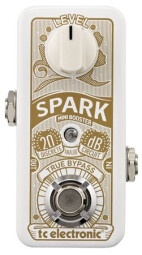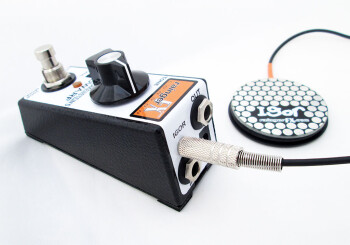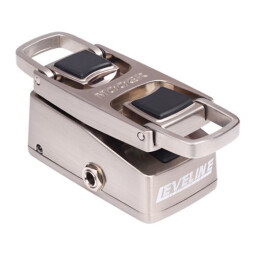One of the great things about pedalboards is that they give you the freedom to choose the effects you want for your rig. There is one caveat: Your pedalboard is a finite size, and you can only add effects up to a point before you run out of space. Without having to buy a larger pedalboard, you can maximize the number of effects you have by adding mini-sized pedals. These tiny powerhouses have become quite popular over the last several years, and, with some limitations, can provide you with sonic power on par with their larger brethren.
The list of manufacturers producing mini stompboxes is growing along with the demand. Tone City, Movall, Red Witch, Stagg, Rainger FX, Joyo, Henretta Engineering and Hotone are just some of the manufacturers now making such pedals. Some of the big gear makers like Ibanez, tc electronic, Electro-Harmonix and Dunlop have gotten into the mini-pedal game, as well. TC in particular has been a leader in porting its larger pedals down to mini-sized versions.
Limitations
Many types of effects can be adapted for the mini-pedal format: “The circuitry inside a mini-pedal can usually be scaled down—by using SMD (surface mount) components, ” says David Rainger of Rainger FX, whose product line includes a number of mini-pedals, “or by having the processing done by a single programmable chip.”

Certain types of pedals are easier to produce in the mini format. “Simpler things like fuzz and clean boost require less circuitry, ” explains Benjamin Fulton from Red Witch.
Virtually any type of effect can be manufactured as a mini-pedal by using digital components, but the task is tougher if you want all analog. “There are tons of circuits that would not be able to fit in a small package, ” says John Pennington of JHS Pedals. “A lot of modulation effects would be very difficult to achieve.”
The user interface is another limitation. Most mini pedals only have room for one footswitch and one full-sized knob. It is possible to design a pedal with smaller knobs, but they’re not as easy to see and use, especially onstage. Having only one footswitch makes it much more difficult to include any foot control other than on/off. To get around this limitation, mini-pedal designers have to get a little more clever in how they design their products. For instance, certain tc electronic pedals have footswitches that can function as either standard on/off switches or momentary switches. Rainger FX’s Dr. Freakenstein’s Dwarf distortion pedal (see image below), lets you control harmonic overtones with a tiny foot-pressure pad called Igor,
Mini-pedals typically don’t have space to fit a 9V battery, and most mini pedals require a DC power supply of some sort. An exception is the Seven Sisters line of analog mini pedals from Red Witch, which can be powered from rechargeable lithium batteries.
Choice
Despite those constraints, it’s impressive just how many types of mini pedals are on the market. You can find reverbs, tremolos, delays, distortion, overdrive, chorus, flangers, filters, loopers, pitch shifters, pretty much any type of pedal you’d want.

Most mini-pedals have a rectangular footprint, looking like a slimmer version of a standard-sized pedal. But some go even smaller, using a square design. For instance, Henretta Engineering makes a line of super small, square-shaped pedals with one footswitch and no knobs. You have to make parameter adjustments via internal trim pots, so they’re not easily tweaked during a performance. Still, if you don’t mind pedals that you have to “set and forget, ” these effects could really save you space.
You can also find volume and wah pedals that are much smaller than their full-size counterparts. Mooer makes the Leveline, an active volume pedal that’s only about 5” long, and which would fit well on a pedalboard full of mini effects.
Dunlop’s Cry Baby Mini is only 5.25” long and 3” wide, which is about half the full size version. A number of other manufacturers make mini wahs including Hotone, Xotic and Morley.
You can even find some mini versions of classic pedals. For instance, Ibanez has the Tube Screamer Mini, a mini version of its classic overdrive pedal. Dunlop has the Fuzz Face Mini, which is about 4.5” in diameter, a lot wider than a typical mini pedal. Still, it’s smaller than the original, which was about 8” in diameter.

If you want the sound of the legendary Klon Centaur overdrive in a mini-pedal body, consider the Wampler Tumnus, which has gotten rave reviews.
Mini me
Mini pedals can be used in a number of different ways. You can mix them in with full size pedals to squeeze more effects onto your pedal board. Or, you could design an all-mini pedalboard that would either give you a lot of variety in a very small space, or a larger-than-normal choice of effects on a medium-to-large sized pedalboard.
However you do it, mini pedals give you additional flexibility to configure your pedalboard the way you want. They’re definitely worth checking out if you’re thinking of adding to your current pedalboard, or configuring a new one.


